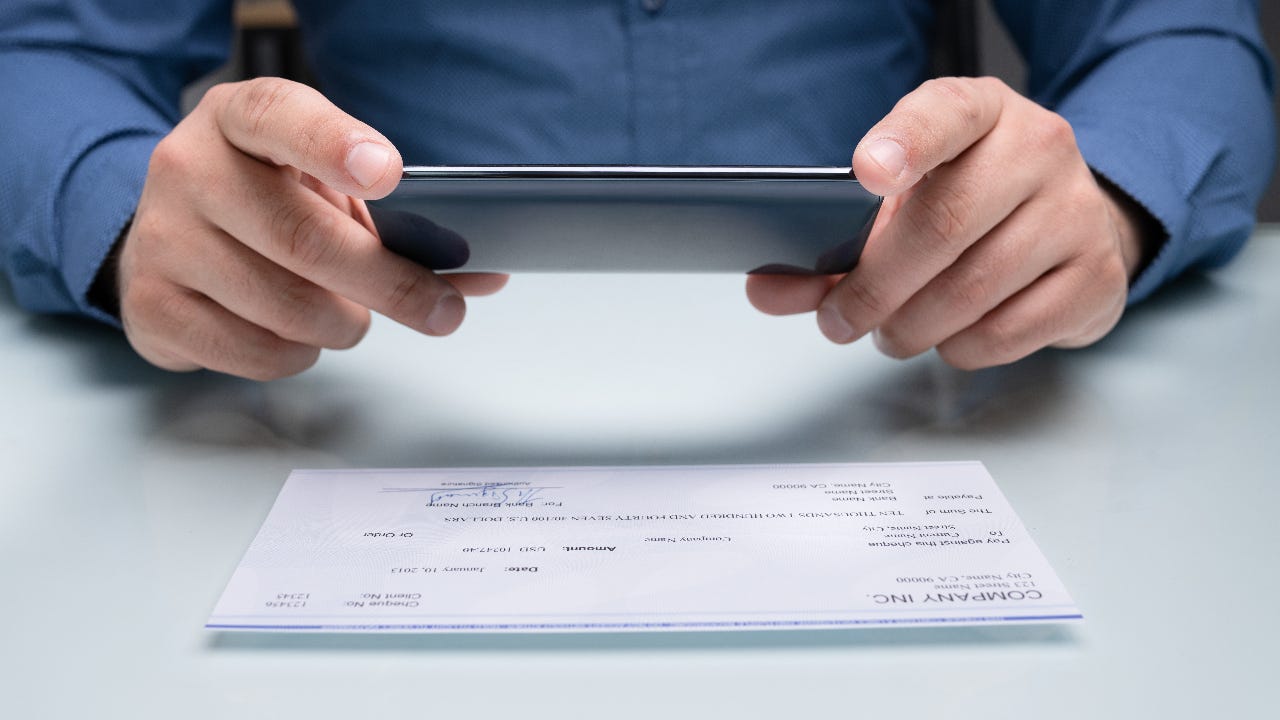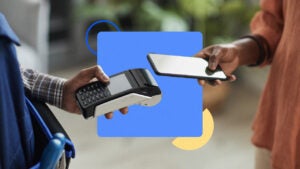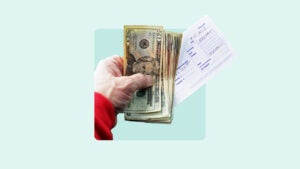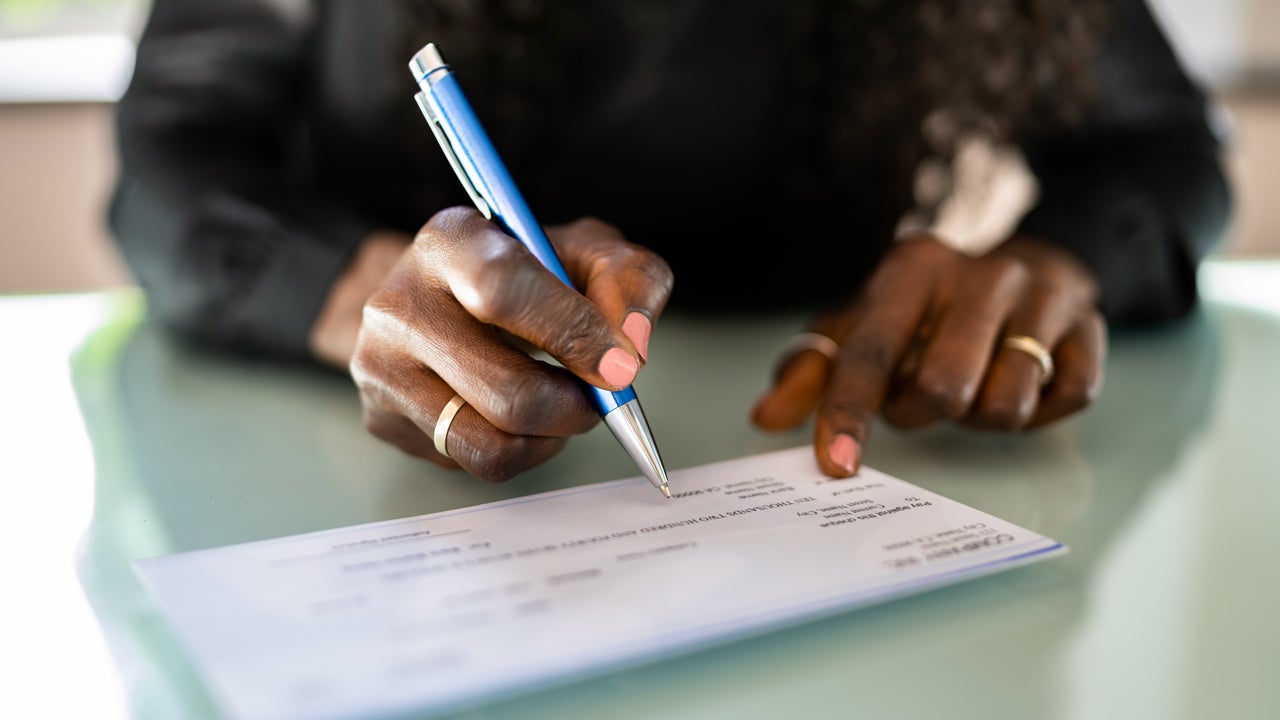What is mobile check deposit and how to use it

Key Takeaways
- Instead of bringing checks to a bank branch or ATM, you can remotely deposit checks at most banks by taking a photo with your smartphone.
- These encrypted digital transactions are typically both safe and convenient.
- Still, you should take proper safety measures to avoid fraud, including confirming you are using the correct app and holding onto the check for several days after depositing.
Cashing a check used to involve a trip to the bank, which could be both time-consuming and inconvenient. But mobile deposit has eliminated those frustrations, making depositing a check as easy as taking a photo at any time of day.
If you have a smartphone, chances are you can use mobile check deposit, provided your bank includes the feature in its mobile banking app.
What is mobile check deposit?
Mobile check deposit saves you a trip to the bank. Instead of physically bringing the check to your bank, you can snap pictures of the front and back of a check, upload them to an app and deposit the check digitally.
Many banks and credit unions offer mobile banking, including Chase Bank, Capital One Bank and Bank of America. Typically, you can use mobile deposit with your checking account and your savings account.
In the banking industry, these digital transactions are referred to as remote deposit capture. They’re processed directly through the bank’s digital platform, and the data you send is protected by encryption.
Still, ensure that the banking app you download to complete a mobile check deposit is legitimate to avoid potential fraud. Apple says it blocked more than 47,000 illegitimate apps from its app store in just one year between May 2023 and 2024. And though the company continuously blocks and removes these fraudulent apps, they sometimes slip through the cracks. To be sure you’re downloading the correct app, look for a download link on your bank’s official website.
How mobile deposit works
Your bank can cap how much you can deposit
Banks often place a limit on the total dollar amount of mobile deposits that can be made daily or monthly. This may be lower than the limit for checks deposited in person.
“Mobile check deposit limits are set to reduce the risk of fraudulent checks being deposited,” says Urjit Patel, chief operating officer of Education First Federal Credit Union. “If you have to deposit checks in excess of predetermined bank limits, you have the option to visit a branch or ATM to facilitate the transaction.”
Endorse the check before depositing
Before you start snapping pictures, make sure to endorse the check, just as you would at your bank. Some banks may also require an additional step of writing “For Mobile Deposit” on the check.
Taking the right picture is a snap with an app
Having clear and well-lit pictures of your check is essential. Luckily, banking apps are smart and can guide you to ensure good image quality.
Having a dark background behind the check can help improve photo quality. After positioning the check within the screen’s frame, the app will automatically snap or prompt the user to take the picture. The same procedure is repeated for both sides of the check.
Deposited checks can bounce even after confirmation
Checks can still be returned when deposited via smartphone. The bank may return the deposit if the issuer has insufficient funds. The check could also be returned if there’s any issue with the mobile deposit, such as if the captured images are illegible or the check is missing an endorsement.
For mobile deposits, the bank may notify you with a confirmation that the check went through. But the bank has the right to return the deposit even after the confirmation is received.
Banks can place a hold on mobile-deposited funds
Just like a regular check, your bank can place a hold on the funds deposited by a smartphone. A common reason for so-called delayed availability of funds is that the funds were deposited too late in the day. After a certain cutoff time for check deposits, the depositor may have to wait an extra business day for the check to clear and for the funds to become available.
Best practices for using mobile deposits
Mobile check deposits are easy and secure, and following a few best practices can give you even more peace of mind. Here are our top tips:
- Check that images aren’t stored on your phone. Bank apps typically “store the deposit data, including images, on a secured web-based server, thereby protecting the customer and the integrity of their financial information,” says credit union executive Patel. But if you happen to take photos of the check using your camera app instead of your banking app, be sure to delete them from your camera roll.
- Hold on to the check. “Hang on to the check until you see it clear and move from pending to approved on your online statement,” says financial advisor Michael Foguth, president and founder of Foguth Financial Group. Wells Fargo recommends storing a hard copy of the check for five days. It can be tempting to toss the check directly into the shredder, but that could lead to problems if the bank has a question about the deposit.
- Avoid free or public WiFi. Your local coffee shop isn’t likely full of hackers, but it’s best to conduct check deposits (and any other sensitive transactions) on trusted networks, like your home WiFi. Also, you can use your smartphone’s 5G connection to deposit the check if you’re out and about.
- Enable mobile security and fraud alerts. Most banks will automatically alert you if they see fishy activity on your account. If you don’t want this to get lost in your daily email shuffle, enable SMS or app notifications. Understand what types of security features your bank offers and if you need to opt in to these.
Bottom line
Taking advantage of the mobile deposit feature through a bank’s app can save you time and a trip to a branch. Be sure that the amount you deposit doesn’t exceed the bank’s limit and hold onto any check for a few days after submitting it.
If your current account doesn’t offer this feature, it may be worth researching checking accounts to find one that comes with mobile check deposit and other helpful digital banking features.







